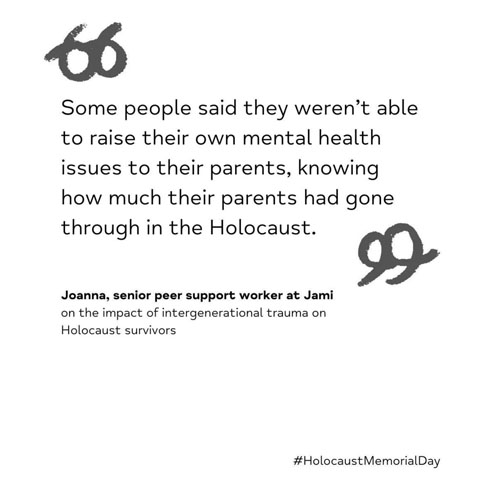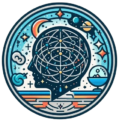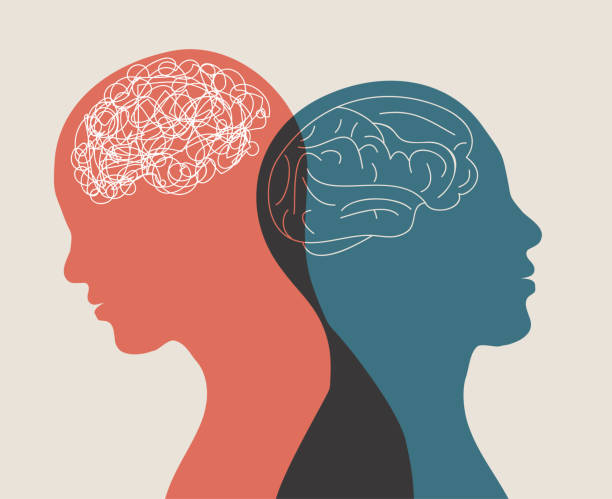Introduction
Can we carry emotional scars of traumas we never personally experienced? Growing research suggests we can—through a phenomenon called inherited trauma or transgenerational trauma. This concept proposes that the psychological wounds of parents and even grandparents can leave lasting imprints on children and grandchildren.

While inherited trauma was once a controversial idea, modern neuroscience, epigenetics, and clinical psychology provide growing evidence that the echoes of traumatic experiences can ripple across generations.
Read More- Trauma and Memory
What Is Inherited Trauma?
Inherited trauma, sometimes called intergenerational trauma, describes patterns where trauma-related symptoms—such as anxiety, depression, or hypervigilance—appear in people who did not directly experience the original traumatic event.
Psychologically, it often begins with untreated or unresolved trauma in a parent or grandparent. Their coping mechanisms, beliefs, behaviors, and emotional responses can unconsciously shape the environment they create for their children, embedding trauma responses in family dynamics (Danieli, 1998).
In parallel, studies of epigenetics show that traumatic stress can influence gene expression, potentially priming the next generation to react more sensitively to stress (Yehuda et al., 2016).
Mechanisms of Transgenerational Transmission
1. Psychological Mechanisms
Children often learn about the world by observing caregivers. If a parent avoids discussing certain topics, shows excessive fear, or models distrust, children can internalize those patterns. Silence around trauma can create confusion and anxiety, leading children to sense unspoken fears without context.
2. Family Narratives and Communication
How families talk about—or avoid—traumatic pasts profoundly affects descendants. Research shows families who never discuss trauma may inadvertently create mystery and shame, while overly graphic or frightening stories can overwhelm children’s sense of safety (Kellermann, 2001).
3. Epigenetic Mechanisms
Epigenetics refers to changes in gene expression that do not alter DNA sequences but influence which genes are turned “on” or “off.” Studies suggest that trauma can cause epigenetic modifications, such as methylation of stress-related genes, which may be passed to offspring, predisposing them to heightened stress reactivity (Yehuda et al., 2014).
Famous Case Studies of Inherited Trauma
Holocaust Survivors and Their Children

The descendants of Holocaust survivors are the most widely studied group in inherited trauma research. Many children of survivors report symptoms of anxiety, nightmares, and difficulties trusting others, despite growing up in safe environments. Studies have found elevated cortisol dysregulation and epigenetic markers consistent with stress exposure (Yehuda et al., 2001).
Descendants of Enslaved African Americans
Scholars and psychologists argue that historical trauma from slavery, segregation, and ongoing systemic racism contributes to intergenerational patterns of anxiety, hypervigilance, and distrust within African American communities (DeGruy, 2005). These patterns can influence parenting styles, community relationships, and mental health outcomes.
Indigenous Communities
Maria Yellow Horse Brave Heart (2003) introduced the concept of Historical Trauma to describe the cumulative emotional and psychological wounding across generations from colonization, forced relocation, and cultural genocide experienced by Indigenous peoples. Symptoms can include substance abuse, depression, and suicidal ideation—often compounded by present-day discrimination.
Does Inherited Trauma Mean We’re Doomed?
Inherited trauma doesn’t mean a person is condemned to suffer the same fate as their ancestors. Rather, it highlights the importance of understanding family histories, acknowledging pain, and breaking cycles through healing and resilience.
Psychologists emphasize that inherited trauma should not absolve individuals or societies from responsibility but should inspire compassionate responses and support for those affected.
Evidence from Neuroscience and Epigenetics
Animal research pioneered understanding of trauma’s biological inheritance. In a landmark study, Dias and Ressler (2014) exposed mice to a cherry blossom scent paired with electric shocks. Not only did the mice learn to fear the scent, but their offspring—who never experienced shocks—also showed heightened fear responses when exposed to the same odor.

In humans, Rachel Yehuda’s groundbreaking studies on Holocaust survivors’ children found altered methylation in the NR3C1 gene, involved in stress hormone regulation. These changes correlated with anxiety and PTSD-like symptoms, suggesting a mechanism for biological transmission (Yehuda et al., 2016).
However, scientists caution that epigenetics does not determine destiny. Environmental factors, relationships, and therapeutic interventions can modify or reverse many epigenetic marks, underscoring the potential for healing (Meaney & Szyf, 2005).
Psychological Impacts Across Generations
Inherited trauma can manifest in various psychological patterns:
- Hypervigilance: Expecting danger even in safe environments.
- Emotional Numbing: Difficulty experiencing or expressing feelings.
- Guilt or Shame: Feeling responsible for ancestors’ suffering or survival.
- Disrupted Attachment: Difficulty trusting or bonding with caregivers.
Unaddressed, these patterns can affect education, relationships, and physical health, perpetuating cycles of trauma within families and communities.
Read More- Narrative Therapy
Therapeutic Approaches to Healing Inherited Trauma
Recognizing inherited trauma is a powerful first step, but effective healing often requires intentional therapeutic work. Interventions can include:
1. Narrative Therapy
Exploring and reconstructing family stories helps individuals make sense of vague or secretive histories. By acknowledging what happened, people can break silence and reduce shame (White & Epston, 1990).
2. Trauma-Focused Cognitive Behavioral Therapy (TF-CBT)
For children and adults affected by intergenerational trauma, TF-CBT can address symptoms like intrusive thoughts, anxiety, and avoidance behaviors by reframing cognitive distortions and processing traumatic memories (Cohen et al., 2016).
3. Family Therapy
Involving multiple family members in therapy can help clarify patterns passed down through generations, repair attachment wounds, and establish healthier communication.
4. Culturally Adapted Interventions
Programs like Maria Yellow Horse Brave Heart’s Historical Trauma and Unresolved Grief Intervention provide culturally sensitive approaches for Indigenous communities, incorporating traditional practices and collective healing (Brave Heart, 2003).
5. Somatic Therapies
Approaches like Somatic Experiencing (Levine, 1997) address how trauma is stored in the body. By working with physical sensations, individuals can release patterns of tension and hyperarousal.
Societal Implications of Inherited Trauma
Understanding inherited trauma has profound implications for social justice and public policy. It emphasizes that historical events—slavery, genocide, colonization—leave psychological and biological legacies that persist in marginalized communities.
Without this understanding, disparities in health, education, and economic outcomes can be misattributed to individual failings rather than generational wounds. Recognizing historical trauma calls for systemic approaches to address racism, poverty, and community healing.
Building Resilience in the Face of Inherited Trauma
While trauma can pass down, so can resilience. Positive factors that interrupt cycles of inherited trauma include:
-
Secure Attachments: Supportive caregiving helps children develop trust and emotional regulation.
-
Community Support: Social connections buffer against stress and provide collective healing.
-
Cultural Identity: Pride in one’s heritage fosters resilience and combats shame.
-
Access to Mental Health Services: Early intervention reduces risk of chronic mental health issues.
Moving Toward Intergenerational Healing
Breaking cycles of inherited trauma requires both individual and collective action:
- Acknowledgment: Recognizing and validating the pain of ancestors reduces silence and shame.
- Education: Teaching historical context in schools and communities promotes empathy and understanding.
- Restorative Justice: Policies addressing historical harms—like reparations or land returns—support systemic healing.
- Therapeutic Support: Expanding culturally competent mental health services makes healing accessible.
As trauma expert Bessel van der Kolk (2014) writes, “Being able to feel safe with other people is probably the single most important aspect of mental health.” Building safe spaces—emotionally and physically—is foundational for breaking cycles of inherited pain.
Conclusion
Inherited trauma reminds us that the human experience is profoundly interconnected across generations. Our ancestors’ struggles can shape our lives in ways we might not immediately recognize—but they do not define our destiny.
By understanding the science behind inherited trauma, honoring family histories, and committing to healing, we can transform painful legacies into opportunities for growth, empathy, and resilience. This process of intergenerational healing benefits not only individuals and families but entire communities and societies, paving the way for a more compassionate world.
References
Brave Heart, M. Y. H. (2003). The historical trauma response among Natives and its relationship with substance abuse: A Lakota illustration. Journal of Psychoactive Drugs, 35(1), 7–13.
Cohen, J. A., Mannarino, A. P., & Deblinger, E. (2016). Trauma-focused CBT for children and adolescents: Treatment applications. Guilford Press.
Danieli, Y. (Ed.). (1998). International handbook of multigenerational legacies of trauma. Springer.
DeGruy, J. (2005). Post traumatic slave syndrome: America’s legacy of enduring injury and healing. Uptone Press.
Dias, B. G., & Ressler, K. J. (2014). Parental olfactory experience influences behavior and neural structure in subsequent generations. Nature Neuroscience, 17(1), 89–96.
Gervais, M. (2017). Finding mastery: High-performance psychology. [Podcast].
Kellermann, N. P. F. (2001). Transmission of Holocaust trauma—An integrative view. Psychiatry, 64(3), 256–267.
Levine, P. A. (1997). Waking the tiger: Healing trauma. North Atlantic Books.
Meaney, M. J., & Szyf, M. (2005). Maternal care as a model for experience-dependent chromatin plasticity? Trends in Neurosciences, 28(9), 456–463.
White, M., & Epston, D. (1990). Narrative means to therapeutic ends. W. W. Norton.
Yehuda, R., et al. (2001). Vulnerability to posttraumatic stress disorder in adult offspring of Holocaust survivors. American Journal of Psychiatry, 158(7), 1022–1028.
Yehuda, R., et al. (2014). Influences of maternal and paternal PTSD on epigenetic regulation of the glucocorticoid receptor gene in Holocaust survivor offspring. American Journal of Psychiatry, 171(8), 872–880.
Yehuda, R., et al. (2016). Holocaust exposure induced intergenerational effects on FKBP5 methylation. Biological Psychiatry, 80(5), 372–380.
Subscribe to PsychUniverse
Get the latest updates and insights.
Join 3,030 other subscribers!
Niwlikar, B. A. (2025, July 9). Inherited Trauma and 3 Important Ways In Which It Shapes The Next Generation. PsychUniverse. https://psychuniverse.com/inherited-trauma/



